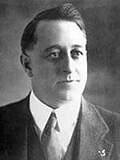| |||||||||||||||||
| |||||||||||||||||
 County results Walton: 40–50% 50–60% 60–70% 70–80% 80–90% Fields: 40–50% 50–60% 60–70% | |||||||||||||||||
| |||||||||||||||||
| Elections in Oklahoma |
|---|
 |
The 1922 Oklahoma gubernatorial election was held on November 7, 1922, and was a race for Governor of Oklahoma. Democrat Jack C. Walton defeated Republican John Fields. Also on the ballot was O. E. Enfield of the Socialist Party. [1]

